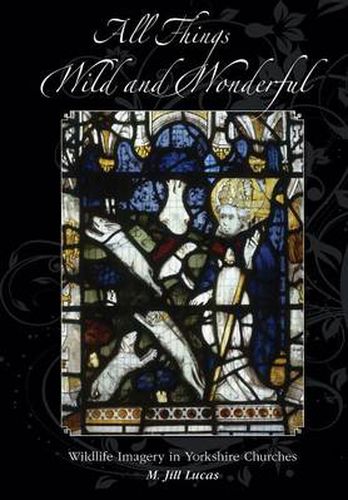Readings Newsletter
Become a Readings Member to make your shopping experience even easier.
Sign in or sign up for free!
You’re not far away from qualifying for FREE standard shipping within Australia
You’ve qualified for FREE standard shipping within Australia
The cart is loading…






This title is printed to order. This book may have been self-published. If so, we cannot guarantee the quality of the content. In the main most books will have gone through the editing process however some may not. We therefore suggest that you be aware of this before ordering this book. If in doubt check either the author or publisher’s details as we are unable to accept any returns unless they are faulty. Please contact us if you have any questions.
Wildlife Imagery in Churches Have you ever wondered why holly, ivy and mistletoe feature particularly at Christmas? Why vine, grapes and wheat are the most common plants portrayed and why is yew planted in many churchyards? Do you know where to find a green mole, a six-legged spider and a blue frog with white patterns on its body? In which church can you see moths and butterflies and where might you find a Jewel Beetle? What are the reasons for carving a preaching fox or for painting two apes disembowelling a pig? Why are lions sometimes found carved on the stonework doorways of older churches? Are you aware of their significance? In which churches will you see windows dedicated to St Francis preaching to identifiable birds? Lecterns invariably illustrate eagles, but in one church the eagle is replaced by a carving of a turkey. Why? What is the symbolism behind depictions of the ‘Pelican in its Piety’? Can you tell the difference between a dragon, a griffin and a wyvern; or between a harpy, a mermaid and a siren? Carved in wood and stone, painted and stained on glass, and embroidered on church textiles, the flora and fauna of the natural world can be found in many churches. Explore the reasons why, in this well illustrated and fascinating book, the subjects were chosen, their religious significance, and the myths, legends and history associated with them.
$9.00 standard shipping within Australia
FREE standard shipping within Australia for orders over $100.00
Express & International shipping calculated at checkout
This title is printed to order. This book may have been self-published. If so, we cannot guarantee the quality of the content. In the main most books will have gone through the editing process however some may not. We therefore suggest that you be aware of this before ordering this book. If in doubt check either the author or publisher’s details as we are unable to accept any returns unless they are faulty. Please contact us if you have any questions.
Wildlife Imagery in Churches Have you ever wondered why holly, ivy and mistletoe feature particularly at Christmas? Why vine, grapes and wheat are the most common plants portrayed and why is yew planted in many churchyards? Do you know where to find a green mole, a six-legged spider and a blue frog with white patterns on its body? In which church can you see moths and butterflies and where might you find a Jewel Beetle? What are the reasons for carving a preaching fox or for painting two apes disembowelling a pig? Why are lions sometimes found carved on the stonework doorways of older churches? Are you aware of their significance? In which churches will you see windows dedicated to St Francis preaching to identifiable birds? Lecterns invariably illustrate eagles, but in one church the eagle is replaced by a carving of a turkey. Why? What is the symbolism behind depictions of the ‘Pelican in its Piety’? Can you tell the difference between a dragon, a griffin and a wyvern; or between a harpy, a mermaid and a siren? Carved in wood and stone, painted and stained on glass, and embroidered on church textiles, the flora and fauna of the natural world can be found in many churches. Explore the reasons why, in this well illustrated and fascinating book, the subjects were chosen, their religious significance, and the myths, legends and history associated with them.